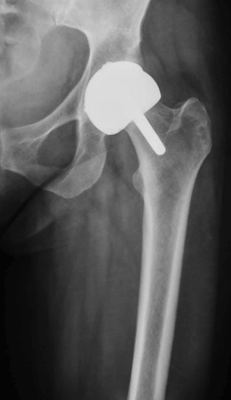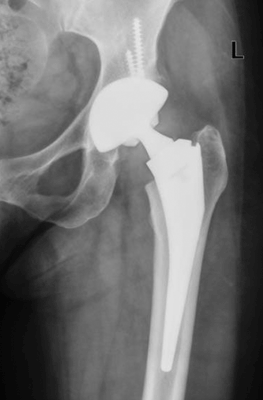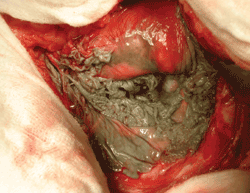Knowing the cause of resurfacing failure can ensure successful conversion to THR
The shell can be retained in cases involving femoral neck fracture, femoral loosening or impingement.
Although hip resurfacing is becoming a popular option for surgeons treating young and active patients, the procedure carries a higher short-term failure rate than total hip arthroplasty, according to a New York surgeon.
At the 26th Annual Current Concepts in Joint Replacement Winter Meeting, Edwin P. Su, MD, described how surgeons can obtain good outcomes when converting a failed hip resurfacing to a total hip replacement (THR).
Causes of failure
“The cause of failure must be carefully assessed prior to the conversion surgery in order to ensure an optimal THR outcome,” Su said. He noted that femoral neck fracture is the primary cause of short-term failure in resurfacing procedures. He theorized that the rate of these fractures could be reduced with improved surgical techniques, careful patient selection and preoperative evaluation of bone quality. Inadequate acetabular fixation or the so-called “slipped cup” is another cause of early failure, which may also be related to surgical technique.
“The greatest cause of a mid-term failure is femoral component loosening and osteonecrosis probably plays a role in this,” Su said. “I think that component malposition is going to play a large role in these mid-term failures as well.” He noted that mid-term investigations of patients with acetabular component malpositioning revealed painful metal reactivity requiring revision.
|
|
Images: Su EP |
Other causes of failure include metal hypersensitivity and unexplained pain due to impingement, undetected stress fractures or pseudotumors.
Component fixation, position
“I think it is essential to assess component position and fixation,” Su said. He uses biplanar radiographs and noted that surgeons should pay special attention to the position of the acetabular component.
“I routinely use preoperative blood metal-ion measurements,” he said. “Of course, there is no established standard for metal levels in these patients, but there is a growing body of literature that would suggest that a well-functioning hip resurfacing device should have less than five to 10 parts per billion of cobalt and chromium. That gives me an idea of how that bearing is functioning in this particular patient and whether there is any evidence of edge-loading.”
|
|
He also noted that using selective injections can help surgeons diagnose unexplained pain and that fluoroscopy can aid surgeons in determining bone-to-implant impingement.
“[Diagnosing] metal hypersensitivity remains a challenge,” Su said. “There is really no good test for this and it remains a diagnosis of exclusion.”
Shell retention or full revision?
In planning conversion procedures, surgeons have the option of retaining the shell from the hip resurfacing.
“I think this is acceptable for a well-positioned, well-fixed and undamaged shell,” Su said. “It is applicable in situations such as, a femoral neck fracture and in a femoral loosening. Of course, you need to find a large-diameter metal bearing by the same manufacturer to match the size.” Retaining the shell is also acceptable for cases of impingement and can improve the head-to-neck ratio.
“A full revision is necessary when there is component malposition of chronic duration because there will be damage to the metal components,” Su said. “It is also best when there is a question of metal hypersensitivity.” – by Gina Brockenbrough
Reference:
- Su E. Surface replacement conversion: Assuring an optimal THR outcome. Paper #44. Presented at the 26th Annual Current Concepts in Joint Replacement Winter Meeting. Dec. 9-12, 2009. Orlando, Fla.
- Edwin P. Su, MD, can be reached at Hospital for Special Surgery, 535 East 70th Street, New York, New York 10021; 212-606-1128; e-mail: sue@hss.edu.
![]()
I think there are those who would disagree that there is really a good test for diagnosing metal hypersentitivity and that it reamins a diagnosis of exclusion. Lymphocyte transformation testing is commonly used for this. Although, I would agree that it is not perfect, it is a reasonable test to obtain.
Craig J. Della Valle, MD,
Orthopedics
Today Editorial Board Member
Associate Professor of Orthopedic
Surgery, Rush University Medical Center



